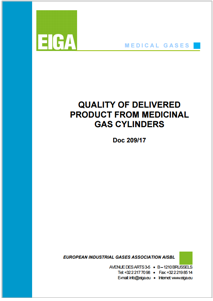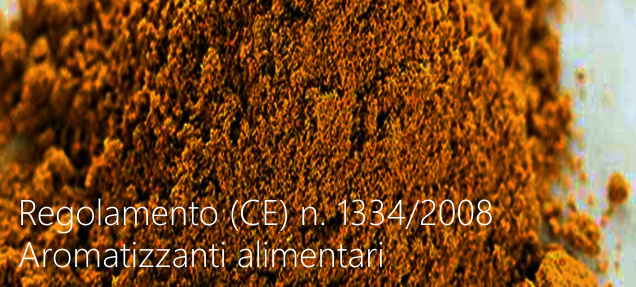Informazione tecnica HSE / 25 ° anno
/ Documenti disponibili:
45.707
/ Documenti scaricati: 34.765.531
/ Documenti scaricati: 34.765.531

This publication has been prepared by the European Industrial Gases Association to present data that shows that metallic particles do not migrate from medicinal gas cylinders in quantities that could be considered toxicologically relevant.
Medicinal gases are authorised according to European Union Directive 2001/83/EC as medicinal products, this includes their container closure system, which in the case of gases consists of cylinders and valves.
No serious adverse reactions have been detected through the pharmacovigilance systems of the EIGA Member Companies arising from inhalation of particles migrating from the gas cylinder.
EIGA have conducted analytical tests in order to measure metallic elements, that could be present in medicinal gases. The results have concluded that impurities measurements are below the detectability levels as well as below ICH Q3D requirements.
EIGA is therefore of the opinion that the medicinal gases including their container closure systems do not present any risk to the patient by migration of metallic particles in toxicologically relevant quantities. Consequently, leaving the benefit-risk balance of medicinal gases unchanged. This publication explains in detail the tests conducted by EIGA Member Companies to confirm the physical view point of flows inside of gas cylinders.
Table of Contents
1 Introduction
2 History of medicinal gases
3 Types of gas cylinder package
3.1 Gas cylinders
3.2 Gas cylinder valves
4 Filling of gases into gas cylinders
5 Internal condition of compressed gas cylinders.
6 Pharmacovigilance
7 Testing of medicinal oxygen from gas cylinders
7.1 Test objectives
7.2 Sampling method
7.3 Analysis results
7.4 Internal observations of cylinders (cylinder bottom and walls), Cylinder pictures (Batch 1)
7.5 Internal observations of cylinders (cylinder bottom and walls), Cylinder pictures (Batch 2)
7.6 Discussion of analytical results
8 Conclusions
9 References
10 Other References
Table 1 Description of cylinders and equipment used for particle measurement
Table 2 Particle measurements Scenario 1 9 sample results and scenario 2 6 sample results
Table 3 Application data and related calculations
Figure 1 Example of a cylinder valve and valve protection
Figure 2 Example of a gas cylinder package
Figure 3 Example of gas cylinder package with accessories
Figure 4 Schematic of equipment used for expansion and filtration of oxygen cylinders
Figure 5 Laboratory installation
Figure 6 Laboratory installation
Figure 7 External view of cylinders 1,2, and 3 from company K93
Figure 8 Internal views of cylinder K93.1
Figure 9 Internal views of cylinder K93.2
Figure 10 Internal views of cylinder K93.3
Figure 11 External view of cylinders 1,2, and 3 from company J62
Figure 12 Internal views of cylinders J62.1
Figure 13 Internal views of cylinder J62.2
Figure 14 Internal views of cylinder J62.3
Figure 15 External views of cylinders 1, 2 and 3 from company L89
Figure 16 Internal views of cylinder L89.1
Figure 17 Internal views of cylinder L89.2
Figure 18 Internal views of cylinder L89.3
Figure 19 External view of cylinders 4, 5, and 6 from company K93
Figure 20 Internal views of cylinder K93.4
Figure 21 Internal views of cylinder K93.5
Figure 22 Internal views of cylinder K93.6
Figure 23 External view of cylinders 4, 5, and 6 from company L89
Figure 24 Internal views of cylinder L89.4
Figure 25 Internal views of cylinder L89.5
Figure 26 Internal views of cylinder L89.6
EIGA 2017
Regolamento di esecuzione (UE) 2016/879 della Commissione, del 2 giugno 2016, che stabilisce, ai sensi del regolamento (UE) n. 517/2014 del Parlamento europeo e ...

Regolamento (CE) n. 1334/2008 del Parlamento europeo e del Consiglio, del 16 dicembre 2008 , relativo agli aromi e ad alcuni ingredienti alimentari con proprietà aromatizz...

ECHA/NR/18/36
Scientific criteria have been agreed to identify endocrine disruptors under the EU legislation for pesticides and biocides. The criteria for b...
Testata editoriale iscritta al n. 22/2024 del registro periodici della cancelleria del Tribunale di Perugia in data 19.11.2024